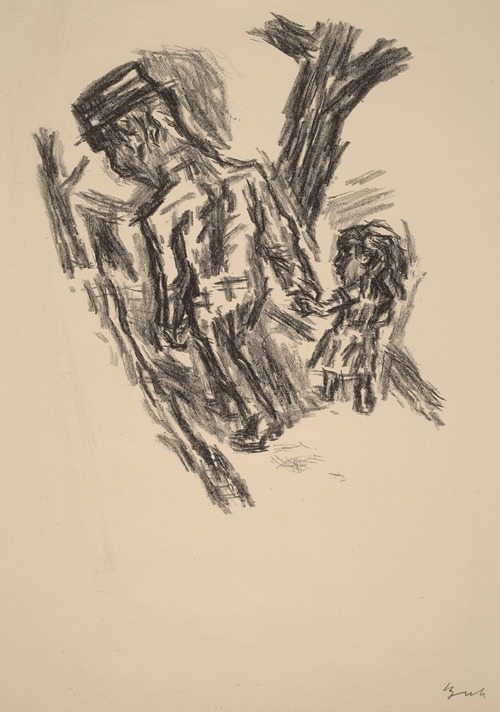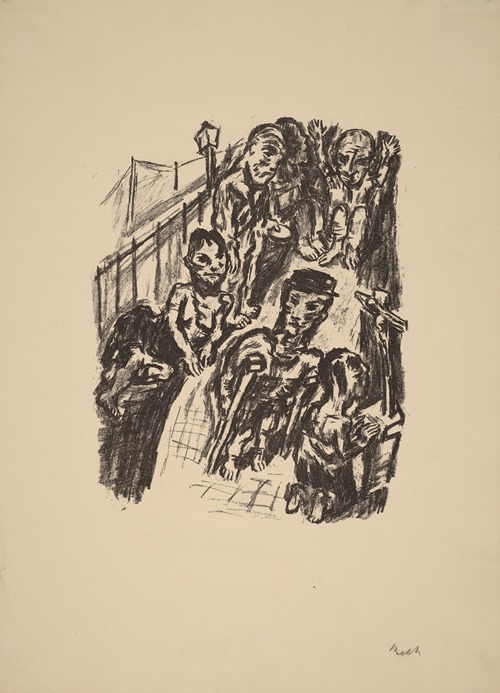





René Beeh was a German draughtsman and painter from Alsace. He was held in high esteem by his contemporaries and called "the coming genius" (das kommende Genie) by art historian Wilhelm Hausenstein, but with his having died prematurely, he has been mostly forgotten.
Beeh was taught in the Fine Arts School in Strasbourg from 1900 until 1905, then in the Academy of Fine Arts in Munich (student number 2936, registered on 9 May 1905), where his teachers were Peter Halm, Hugo von Habermann and Franz von Stuck. In 1910, he travelled to French Algeria where he stayed until 1911, before journeying through Italy and Provence. In 1914, he published a selection of letters from Algeria along with sixty drawings, under the title M'Barka. Malerbriefe aus Algerien mit sechzig Zeichnungen.
During the First World War, Beeh was drafted as a surveyor for the Imperial German Army on the Western Front in Belgium (on the Ypres Salient) and Northern France. Some of his War drawings were published in the Munich review Zeit-Echo. After the War, Beeh, suffering from depression, is thought to have destroyed much of his own work. He died from a severe case of seasonal flu at the age of 36.
Beeh was a member of the Neue Münchner Secession (New Munich Secession). He was also friends with several members of the Strasbourg group of painters Groupe de Mai.
In 1914, Beeh illustrated a book celebrating the centenary of Gottfried Keller, and in 1919−1920, the novel Inferno by August Strindberg. He also illustrated a 1918 edition of Jeremias Gotthelf's The Black Spider, and he contributed to the periodical Münchner Blätter für Dichtung und Graphik ("Munich Journal for Poetry and Graphics") alongside Paul Klee, Heinrich Campendonk and Alfred Kubin.



